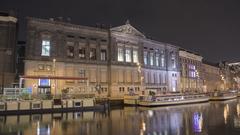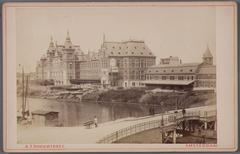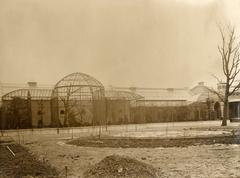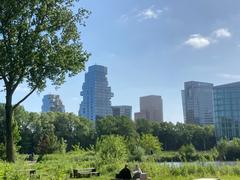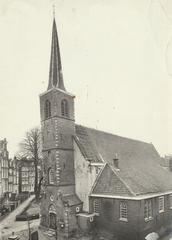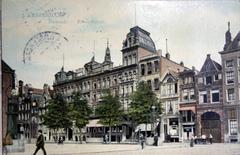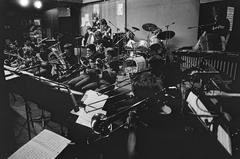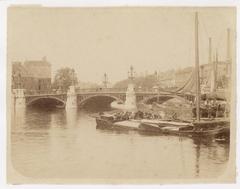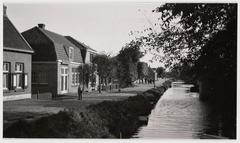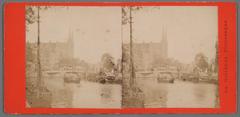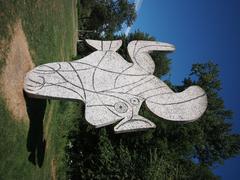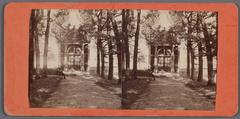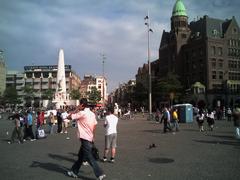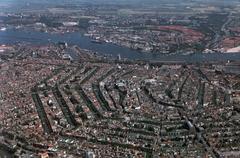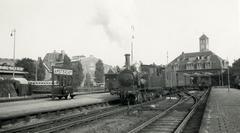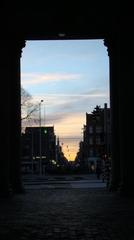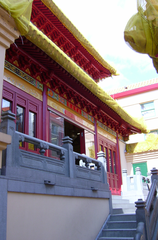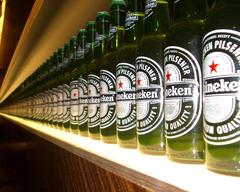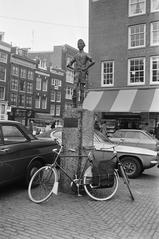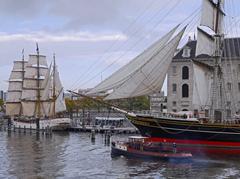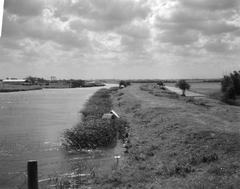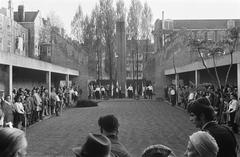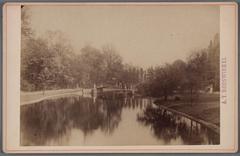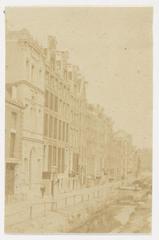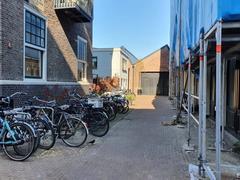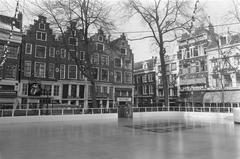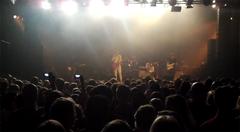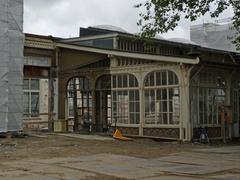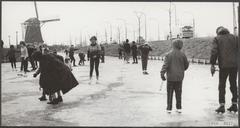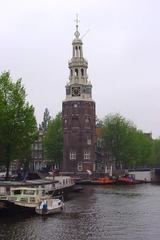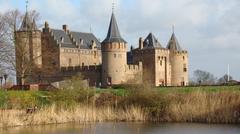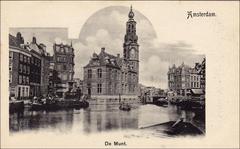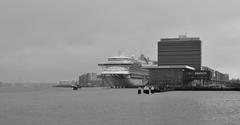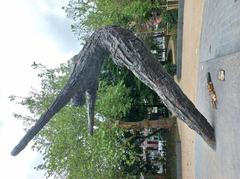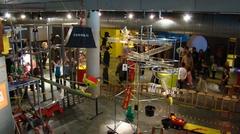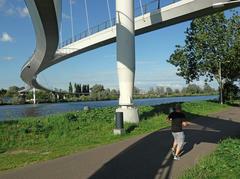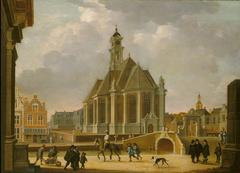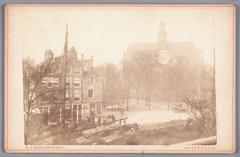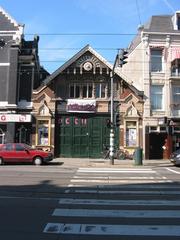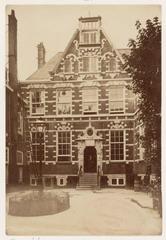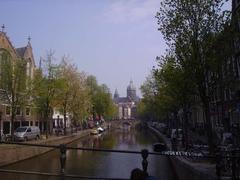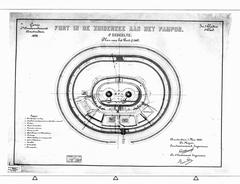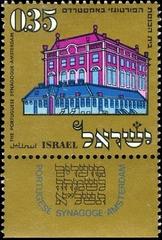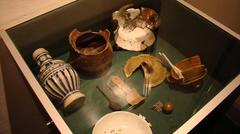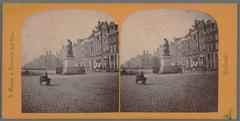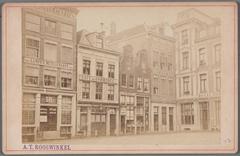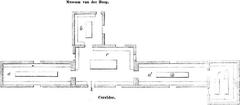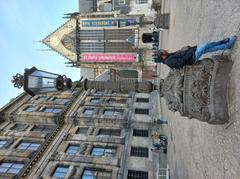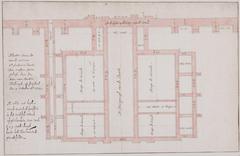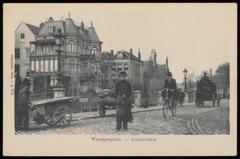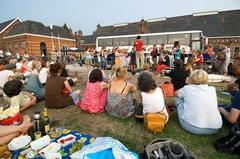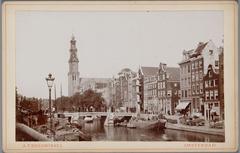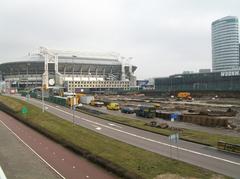Visiting Sluishuis: A Complete Guide to Amsterdam’s Architectural Marvel
Publication Date: 22/07/2024
Introduction to Sluishuis and Its Significance
Welcome to Sluishuis, an architectural marvel and a beacon of sustainable living located in the IJburg district of Amsterdam. Completed in 2022, Sluishuis is a striking example of contemporary design and urban planning, seamlessly integrating with the surrounding waterways. Designed by renowned architectural firms Bjarke Ingels Group (BIG) and Barcode Architects, this innovative building is not only a visual landmark but also a model for sustainable urban living. The name ‘Sluishuis,’ translating to ‘Lock House,’ reflects its profound connection with Amsterdam’s historical relationship with water management and urban expansion. This guide aims to provide a comprehensive overview of Sluishuis, covering its history, architectural significance, cultural and social impact, visitor information, and nearby attractions. Whether you’re an architecture enthusiast, a sustainability advocate, or a curious traveler, Sluishuis offers a unique and enriching experience. Dive into the details to discover why Sluishuis stands out as a must-visit destination in Amsterdam. For more detailed information, visit the official Sluishuis website.
Contents Overview
- Introduction
- History and Significance of Sluishuis
- Historical Context
- Architectural Significance
- Cultural and Social Impact
- Economic Significance
- Environmental Considerations
- Integration with Amsterdam’s Urban Landscape
- Community Engagement and Public Spaces
- Visitor Information
- Visiting Hours and Tickets
- FAQ
- Nearby Attractions and Travel Tips
- Getting There
- Best Time to Visit
- Dining and Refreshments
- Accessibility
- Safety Tips
- Nearby Attractions
- Conclusion
- Sources
History and Significance of Sluishuis
Historical Context
Sluishuis, a striking architectural marvel in Amsterdam, is a relatively recent addition to the city’s landscape. Completed in 2022, this innovative building is situated in the IJburg district, an area known for its modern urban development and water-centric design. The name ‘Sluishuis’ translates to ‘Lock House,’ reflecting its integration with the surrounding waterways and its role in the city’s ongoing relationship with water management and urban planning.
Architectural Significance
Designed by the renowned architectural firms Bjarke Ingels Group (BIG) and Barcode Architects, Sluishuis stands as a testament to contemporary architectural ingenuity. The building’s design is characterized by its unique shape, which appears to float on the water. This design not only creates a visually stunning landmark but also serves practical purposes. The building’s cantilevered structure allows for a public walkway underneath, connecting the waterfront to the inner courtyard and creating a seamless integration with the surrounding environment.
The architectural design of Sluishuis is a blend of modern aesthetics and sustainable practices. The building incorporates green roofs, solar panels, and energy-efficient systems, making it a model for sustainable urban living. The use of natural materials and the emphasis on open spaces and natural light further enhance its environmental credentials.
Cultural and Social Impact
Sluishuis is more than just an architectural feat; it is a cultural and social hub. The building houses a mix of residential units, commercial spaces, and public amenities, fostering a vibrant community atmosphere. The inclusion of public spaces such as a rooftop garden, a marina, and a public square encourages social interaction and community engagement.
The building’s design and functionality reflect Amsterdam’s broader cultural values of inclusivity, sustainability, and innovation. By providing affordable housing options alongside luxury apartments, Sluishuis promotes social diversity and inclusivity. The integration of public spaces and amenities ensures that the building serves not just its residents but the wider community as well.
Economic Significance
From an economic perspective, Sluishuis represents a significant investment in the IJburg district and Amsterdam as a whole. The development of Sluishuis has attracted considerable attention and investment, boosting the local economy and creating job opportunities. The building’s commercial spaces provide a platform for local businesses, contributing to the area’s economic vitality.
Moreover, Sluishuis has become a tourist attraction in its own right, drawing visitors from around the world. Its unique design and prime location make it a popular destination for architecture enthusiasts and tourists alike, further stimulating the local economy through tourism-related activities.
Environmental Considerations
Sluishuis is a pioneering example of sustainable urban development. The building’s design incorporates numerous environmentally friendly features, including green roofs, solar panels, and energy-efficient systems. These features not only reduce the building’s environmental footprint but also set a benchmark for future developments in the city.
The use of green roofs and vertical gardens helps to improve air quality, reduce urban heat island effects, and promote biodiversity. The building’s energy-efficient systems, including advanced insulation and renewable energy sources, significantly reduce its energy consumption and carbon emissions.
Integration with Amsterdam’s Urban Landscape
Sluishuis is a key component of Amsterdam’s broader urban development strategy, which emphasizes sustainable growth, water management, and innovative design. The building’s location in the IJburg district, a man-made archipelago, highlights the city’s ongoing efforts to expand and develop new urban areas while maintaining a strong connection to its waterways.
The integration of Sluishuis with the surrounding water bodies is a nod to Amsterdam’s historical relationship with water. The city’s extensive canal system and its history of land reclamation and water management are reflected in the design and functionality of Sluishuis. The building’s floating appearance and its connection to the waterfront pay homage to this rich history while looking forward to a sustainable future.
Community Engagement and Public Spaces
One of the standout features of Sluishuis is its emphasis on community engagement and public spaces. The building’s design includes a variety of public amenities, such as a rooftop garden, a marina, and a public square. These spaces are designed to encourage social interaction and community engagement, making Sluishuis a vibrant and dynamic part of the IJburg district.
The rooftop garden, in particular, offers stunning views of the surrounding area and serves as a communal space for residents and visitors alike. The marina provides access to the water, promoting recreational activities such as boating and kayaking. The public square serves as a gathering place for events and social activities, further enhancing the building’s role as a community hub.
Visitor Information
Visiting Hours and Tickets
Visiting Hours
- Monday to Friday: 9 AM - 6 PM
- Saturday and Sunday: 10 AM - 5 PM
Tickets
- General Admission: €12
- Students and Seniors: €8
- Children under 12: Free
FAQ
Q: What are the best times to visit Sluishuis?
A: The best times to visit Sluishuis are early morning and late afternoon to avoid crowds and enjoy the best lighting for photography.
Q: Are there guided tours available?
A: Yes, guided tours are available daily at 11 AM and 3 PM. You can book a tour on the official Sluishuis website.
Nearby Attractions and Travel Tips
Getting There
Sluishuis is easily accessible via various modes of transportation:
- Public Transport: Amsterdam’s efficient public transport system makes it easy to reach Sluishuis. The tram line 26 from Amsterdam Central Station to IJburg is the most convenient option. Alight at the Vennepluimstraat stop, and from there, it’s a short walk to Sluishuis. For more details on tram schedules, visit the GVB website.
- Bicycle: Amsterdam is renowned for its cycling culture, and biking to Sluishuis is a scenic and eco-friendly option. The city has well-marked cycling paths, and bike rentals are widely available. The ride from the city center to Sluishuis takes approximately 30 minutes.
- Car: If you prefer driving, there are parking facilities available in the IJburg area. However, parking in Amsterdam can be expensive, so it’s advisable to check parking rates and availability in advance. For parking information, visit Parkopedia.
Best Time to Visit
The best time to visit Sluishuis is during the late spring (May to June) and early autumn (September to October) when the weather is pleasant, and the tourist crowds are thinner. During these months, you can enjoy outdoor activities and the stunning views of the IJmeer without the peak season rush.
Dining and Refreshments
Sluishuis and the IJburg district offer a variety of dining options to suit different tastes and budgets:
- Local Cafés: Enjoy a coffee or light snack at one of the local cafés. Many of these establishments offer outdoor seating with views of the water.
- Restaurants: For a more substantial meal, there are several restaurants in the area serving Dutch and international cuisine. Some popular options include Restaurant Mchi and NOMADS Amsterdam.
- Picnic Spots: If you prefer a more relaxed dining experience, consider packing a picnic. The floating garden and nearby parks provide scenic spots to enjoy a meal outdoors.
Accessibility
Sluishuis is designed with accessibility in mind, ensuring that all visitors can enjoy the space:
- Wheelchair Access: The building and public areas are wheelchair accessible, with ramps and elevators available.
- Guided Tours: For visitors with mobility issues or those who prefer a guided experience, several tour operators offer accessible tours of Sluishuis and the IJburg district. For more information, visit Accessible Travel Netherlands.
Safety Tips
- Water Safety: If you plan to engage in water activities, always wear a life jacket and follow safety guidelines provided by rental companies.
- Personal Belongings: Amsterdam is generally safe, but it’s always wise to keep an eye on your personal belongings, especially in crowded areas.
- Emergency Contacts: Familiarize yourself with local emergency contacts. In case of an emergency, dial 112 for immediate assistance.
Nearby Attractions
While visiting Sluishuis, consider exploring other attractions in the IJburg district and beyond:
- Diemerpark: A large park offering walking and cycling paths, sports facilities, and picnic areas. It’s a great place to relax and enjoy nature.
- Blijburg Beach: A man-made beach on the IJmeer, perfect for sunbathing, swimming, and beach sports. For more information, visit Blijburg Beach.
- Pampus Island: A historic fort island accessible by boat from IJburg. It offers guided tours and exhibits on Amsterdam’s maritime history. For more details, visit Pampus Island.
Stay Updated
Stay up to date with the latest events and news about Sluishuis by following their social media channels or downloading the official mobile app Audiala. For more travel tips and related posts, check out our other articles.
Conclusion
Sluishuis stands as a testament to Amsterdam’s commitment to sustainable urban development, inclusivity, and innovative design. This architectural marvel, situated in the IJburg district, not only enhances the city’s skyline but also serves as a vibrant community hub. With its green roofs, solar panels, and energy-efficient systems, Sluishuis sets a benchmark for future urban developments. Its blend of residential units, commercial spaces, and public amenities fosters a dynamic and inclusive community atmosphere. The building’s cultural and social impact, coupled with its economic significance and environmental considerations, make it a standout addition to Amsterdam’s urban landscape. Whether you’re exploring the rooftop garden, enjoying water activities, or simply admiring the unique architectural design, Sluishuis offers a memorable experience for all visitors. For the latest updates and more information, don’t forget to check the official Sluishuis website and follow their social media channels. Your visit to Sluishuis promises to be a highlight of your Amsterdam journey, reflecting the city’s progressive spirit and its harmonious blend of history and modernity.
Sources and Further Reading
- “Exploring Sluishuis - Visiting Hours, Tickets, and Architectural Significance in Amsterdam,” 2024, Author https://sluishuis.nl/
- “Discover Sluishuis - An Architectural Marvel in Amsterdam - Visiting Hours, Tickets, and More,” 2024, Author https://sluishuis.nl/
- “Visitor Tips for Sluishuis, Amsterdam - How to Get There, Best Times, and More,” 2024, Author https://sluishuis.nl/
